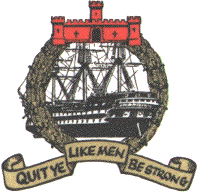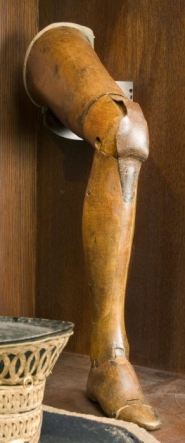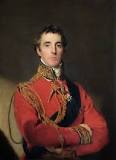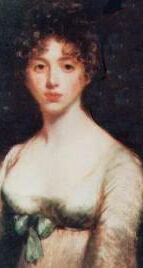
Plas Newydd (or New Hall in English) overlooking the Menai Straits, Anglesey, where I lived for three months when training at HMS Conway.

The site was originally occupied in the 13th century and was known as Llwyn-y-Moel, but by 1470 it was owned by the Griffith family, and they created a hall-house. Over the centuries through marriages, it became the home of the Marquis of Anglesey.
In 1533 Ellen Griffin married and she and her husband lived in Llwyn-y-Moel and their grand daughter married Lewis Bayly, and it was Lewis Bayly who renamed the property as Plas Newydd during renovations. Lewis Bayly’s grandson gained an Irish Baronetcy and became Baron of Plas Newydd and also Lord Lieutenant of Anglesey in 1761.
His son, Henry Bayly, born 1744, inherited the title of the 9th Baron Paget from a distant cousin, and later changed his name to Paget, because the title could not pass through the female line. He took over various estates in Staffordshire, and on his father’s death in 1782 he acquired a third Baronetcy and Plas Newydd and the Anglesey estate. He was made the Earle of Uxbridge and also became Lord Lieutenant of Anglesey in 1784.
Henry Bayly died in 1812 and his son Henry William took over and he became the Second Earl of Uxbridge. Henry William had raised a regiment in the 1790’s and was commissioned in the army in 1795. He fought in several campaigns and distinguished himself and became a Major General in 1802. In 1815 he was in command of the army’s cavalry and lead a charge during the battle of Waterloo.

The film ‘Waterloo’ concentrates on the Scotts Greys, rather than the whole of the heavy brigade. If you click on the above link and scroll down you’ll gain a better understanding of the heavy brigade.
As a reward for his skill and courage he was made Marquis of Anglesey. Unfortunately one of the last cannon balls fired by the French shattered his leg which necessitated amputation. He had a false leg created, which was the world’s first articulated prosthetic leg made from wood – he had several for different functions -walking, dancing, riding etc – well you would wouldn’t you . . . .

The original prosthetic leg – photo from the internet.
Henry William died in 1841.
During the 1930’s Rex Whistler was a frequent visitor to Plas Newydd where he painted the large mural in the dining room. Well worth a visit.
 It is painted trompe-l’oeil, which means that the scene changes as you walk the length of the painting.
It is painted trompe-l’oeil, which means that the scene changes as you walk the length of the painting.
I first saw this painting at a cost of 6d in 1960, when I was a Conway cadet, and I have never forgotten the thrill of seeing such a painting.
In the centre of the picture are steps leading down to the water and it is up these steps that Neptune is supposed to have climbed, and if you are on the left of the picture the wet footprints come towards you from the top of the steps – move to the right side of the picture you will see the footprints still coming towards you, although you would expect them to point to the left, away from you.
Rex Whistler volunteered for service at the outbreak of WW2, but was killed on the 18th July, 1944, in Normandy – he was an officer and tank commander in the Welsh Guards.
Don’t get Plas Newydd Anglesey mixed up with Plas Newydd, Llangollen.
 Plas Newydd, Llangollen, about 1840
Plas Newydd, Llangollen, about 1840
In the picture the house retained the Gothic features that the two ladies introduced.
The home is famous for two ladies of Llangollen, Lady Eleanor Butler and Miss Sarah Ponsonby, who lived there from 1780 – 1829. They became celebrated throughout the country as the story of their friendship spread through Regency Society. They were known as the most celebrated virgins in Europe.

They both met in Kilkenny, Ireland, in 1768 – Sarah was an orphan, whilst Eleanor was the daughter of Walter Butler, owner of Kilkenny Castle. Eleanor was clever and bookish, but she was 39 and had passed the point of getting married. Her father was trying to get her to join a convent, which would keep everything tidy for the family, because her brother had married well, as had her sister.
In the meantime twenty three year old Sarah was receiving the unwanted amorous attentions of her guardian, Sir William Fownes. Sir William’s wife Betty was still alive, but not in the best of health. Sarah could see that Sir William was waiting his time out to make Sarah the second Lady Fownes, only she didn’t want to have anything to do with Sir William.
The two single women turned to one another for support, and hatched a plan to escape from Ireland. It was all very cloak and dagger, with Eleanor and Sarah dressing in men’s clothing, and armed with a pistol, and Sarah’s dog, climbed through a window to flee Ireland, via the Waterford ferry to England. Two days later, both women were caught.
Eventually the Fownes family gave in and allowed Sarah to join Eleanor and they both left for Wales.
While they were searching for the right place for them both to retire, so as to paint and write, they heard that Sir William had become ill and died of ‘strangulation of the stomach’ followed by a stroke.
They lived together at Plas Newydd, Llangollen, for fifty years and became the centre of a fashionable place to visit.
Some of the more famous people who came to stay –
 Duke of Wellington
Duke of Wellington

Lady Caroline Lamb – the novelist and lover of Byron, even though she was married to another man.

Josiah Wedgwood – potter and anti-slaver 
Wedgwood produced the medallion ‘Am I not a man’ in support of William Wilberforce’s campaign against slavery.

William Wordsworth
and many other well known people.
After the ladies died the house was owned by several different people including a General John Yorke who altered it somewhat, to what it looks like today.

In 1932 the house was taken over by Llangollen Council.
